I continued down the Pa'rus Trail, following the Virgin River along the bottom of Zion Canyon. It was beginning to get quite windy, swirling the clouds about in the sky.




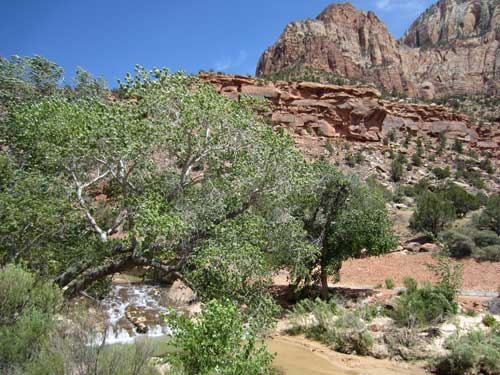
This small cascade is actually a man-made diversion dam to send some of the water to the nearby town of Springdale. There are many such historic dams and irrigation ditches along the river that the early settlers used to try to forge a life here.



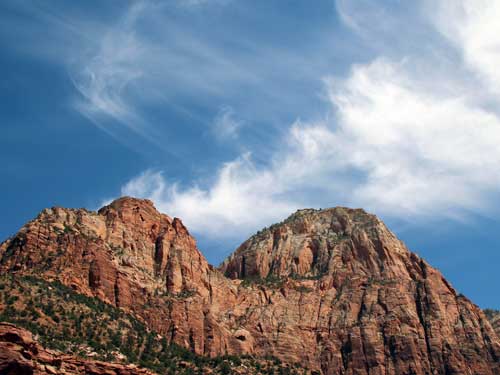

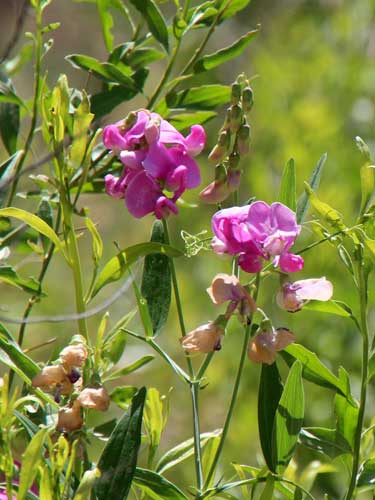

The wind was so strong by this point, the cyclists were having a hard time remaining upright.
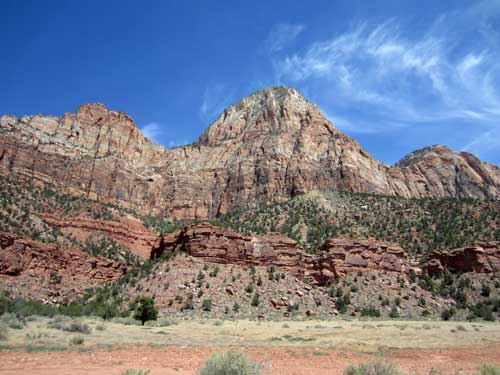

Looking down...

... and up the river

While it may look tranquil now, during spring runoff or after a rainstorm, these waters fill with particles of sandstone. The river carries an average of 5,000 tons of rock fragments daily... evidence of the role it played in carving this canyon.



Silverleaf Nightshade is a member of the potato family. Unlike its edible cousin, its leaves and fruit are toxic at all stages of maturity.
I took a short break in the shade along the river before returning to 'civilization' in the form ot the park's amphitheater and nature center.



I entered the nature center in the middle of a kids' program. I walked around quietly looking at the exhibits while kids of all ages excitedly answered the ranger's questions about the amazing animals of the canyon.



It was believed that porcupines could throw their quills at an enemy, but in reality, the quills are only released upon contact.

The 'ins and outs' of a bat

Both male and female Bighorn Sheep have horns, but the female's horns are much smaller and never make the big curl. Unlike antlers which are shed yearly, sheep retain their horns throughout their lives.


"You know you make me wanna shout! Kick my heels up and shout! Throw my hands up and shout!"
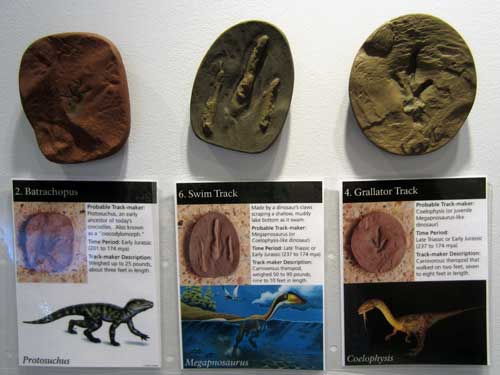
During the end of the Triassic and beginning of the Jurassic epochs, North America sat on the equator. This area would have been near the shore of a large, shallow, freshwater lake (Lake Dixie). As dinosaurs walked along the muddy shores, they left behind footprints... which eventually were buried by sediment that hardened into rock.

The Grand Staircase area
The large area of land stretching from Bryce Canyon through Zion and down into the Grand Canyon is known as the Grand Staircase. In the 1870's, geologist Clarence Dutton described this region as a huge stairway, with each cliff edge forming a sort of giant step. He divided these sedimentary rock layers into five sections:
Pink Cliffs
Grey Cliffs
White Cliffs
Vermilion Cliffs
Chocolate Cliffs
They are roughly based on age, with the youngest rocks being at the top of the staircase. At Bryce Canyon, the oldest exposed rocks (Dakota Sandstone) are the youngest exposed rocks at Zion... and the oldest exposed rocks in Zion (Kaibab Limestone) are the youngest exposed rocks in the Grand Canyon.

Click for a larger view

